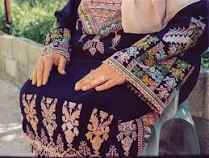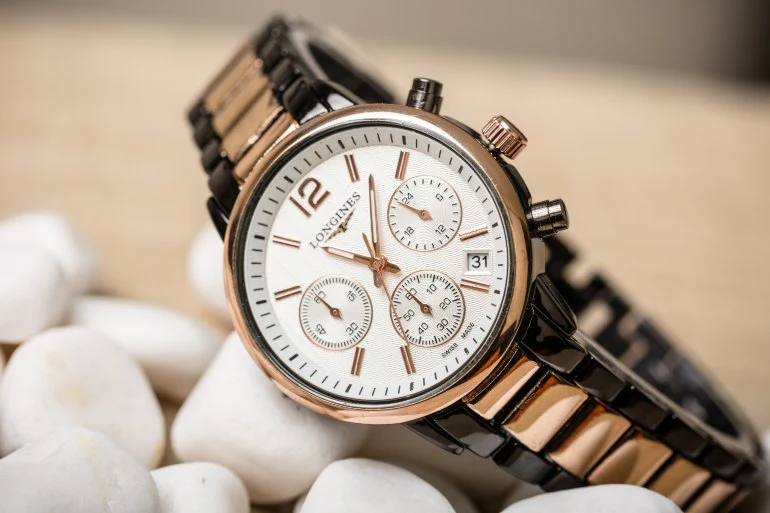Tatreez dress, adorned with intricate embroidery, is more than just a garment; it’s a symbol of tradition, culture, and artistry deeply rooted in the Middle East. Originating from the ancient craft of Tatreez, which means “embroidery” in Arabic, this dress represents centuries of heritage and craftsmanship passed down through generations.
History of Tatreez Dress
The history of Tatreez dress traces back to ancient times when women in the Middle East embellished their garments with hand-stitched designs. These early forms of embroidery served not only as decoration but also as a means of storytelling, reflecting the cultural identity and heritage of the region. Over the centuries, Tatreez evolved, incorporating influences from various civilizations that traversed the Middle East, including Phoenician, Roman, Byzantine, and Ottoman.
Traditional Techniques Used in Making Tatreez Dress
The making of Tatreez dress involves meticulous hand embroidery using traditional techniques passed down through generations. Skilled artisans use a variety of stitches, including cross-stitch, chain stitch, and satin stitch, to create intricate patterns and motifs. The choice of materials, such as silk threads and cotton fabrics, adds to the richness and texture of the embroidery.
Regional Variations of Tatreez Dress
Across the Middle East, Tatreez dress exhibits regional variations, each reflecting the distinct cultural heritage of its locality. From the vibrant colors and geometric patterns of Palestinian Tatreez to the delicate floral motifs of Lebanese Tatreez, these dresses are a testament to the diversity and richness of Middle Eastern embroidery traditions.
Modern Adaptations of Tatreez Dress
In recent years, Tatreez dress has experienced a resurgence in popularity, thanks to modern adaptations that blend traditional craftsmanship with contemporary design aesthetics. Fashion designers and brands have incorporated Tatreez embroidery into their collections, introducing it to a global audience and redefining its role in the fashion industry.
Cultural Importance of Tatreez Dress
The Tatreez dress holds significant cultural importance, serving as more than just a piece of clothing. It is worn during special occasions such as weddings, festivals, and religious celebrations, where it symbolizes heritage, identity, and pride. The intricate patterns and motifs embroidered on the dress often carry deep symbolic meanings, representing themes of love, fertility, and protection.
Impact of Tatreez Dress on Fashion Industry
In recent years, Tatreez dress has garnered attention from the international fashion scene, with designers and celebrities embracing its unique charm and craftsmanship. Collaborations between Middle Eastern artisans and renowned fashion houses have further elevated the status of Tatreez, making it a sought-after luxury item among fashion enthusiasts worldwide.
Challenges and Revival Efforts
Despite its cultural significance, Tatreez dress faces challenges in the modern era, including the decline of traditional craftsmanship and the threat of cultural appropriation. However, various initiatives aimed at preserving and promoting Tatreez embroidery have emerged, including artisanal cooperatives, educational programs, and cultural festivals.
Celebrity Endorsement and Influence
Celebrities and influencers have played a significant role in popularizing Tatreez dress on the global stage. From red carpet appearances to social media posts, influential figures have showcased the beauty and elegance of Tatreez, sparking interest and admiration among their followers.
DIY and Community Involvement
The rise of DIY culture has led to a resurgence of interest in traditional crafts like Tatreez embroidery. Online tutorials, workshops, and community events provide enthusiasts with the opportunity to learn and practice this ancient art form, fostering a sense of community and cultural pride.
Sustainability in Tatreez Dressmaking
As awareness of environmental and ethical issues grows, there is a growing demand for sustainable and ethically sourced fashion. In response, many artisans and designers are embracing eco-friendly practices in Tatreez dressmaking, using organic materials and implementing fair trade principles to ensure the longevity and integrity of this ancient craft.
Future Trends in Tatreez Dress
Looking ahead, the future of Tatreez dress appears promising, with continued innovation and creativity driving its evolution. Emerging trends include experimental designs, digital embroidery techniques, and collaborations with contemporary artists, ensuring that Tatreez remains a vibrant and relevant art form for generations to come.
How to Style a Tatreez Dress
Styling a Tatreez dress is a celebration of culture and creativity. Pair it with traditional accessories such as embroidered shawls, beaded jewelry, and ornate headpieces for a timeless look that honors its heritage. Alternatively, mix and match with modern pieces to create a fusion of old and new, showcasing the versatility and adaptability of Tatreez fashion.
Where to Find Authentic Tatreez Dress
Authentic Tatreez dresses can be found in specialty boutiques, artisan markets, and online platforms that support independent designers and artisans. Seek out reputable sellers who prioritize craftsmanship and authenticity, ensuring that your purchase honors the rich tradition and cultural heritage behind Tatreez embroidery.
Conclusion
In conclusion, Tatreez dress is more than just a fashion statement; it’s a symbol of heritage, craftsmanship, and cultural identity deeply rooted in the Middle East. From its ancient origins to its modern-day adaptations, Tatreez embodies the resilience and creativity of generations of artisans who have kept this tradition alive. By embracing Tatreez dress, we not only celebrate our past but also ensure its preservation for future generations to cherish and admire.
FAQs
- Is Tatreez dress only worn on special occasions?
- While Tatreez dress is often worn during weddings, festivals, and other celebrations, it can also be worn casually depending on the style and design.
- Can I learn Tatreez embroidery even if I’m not from the Middle East?
- Absolutely! Tatreez embroidery workshops and tutorials are available worldwide, welcoming enthusiasts of all backgrounds to learn this beautiful art form.
- Are all Tatreez dresses handmade?
- Yes, authentic Tatreez dresses are meticulously hand embroidered by skilled artisans using traditional techniques passed down through generations.
- What makes Tatreez dress unique compared to other types of embroidery?
- Tatreez embroidery is characterized by its intricate patterns, vibrant colors, and deep cultural symbolism, setting it apart as a unique and distinctive form of artistic expression.
- How can I support the preservation of Tatreez embroidery?
- You can support the preservation of Tatreez embroidery by purchasing authentic Tatreez products from reputable artisans and designers, attending cultural events and workshops, and spreading awareness about this rich cultural heritage.





